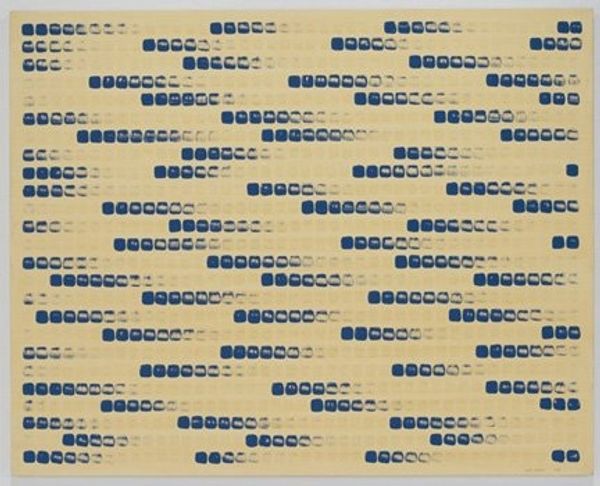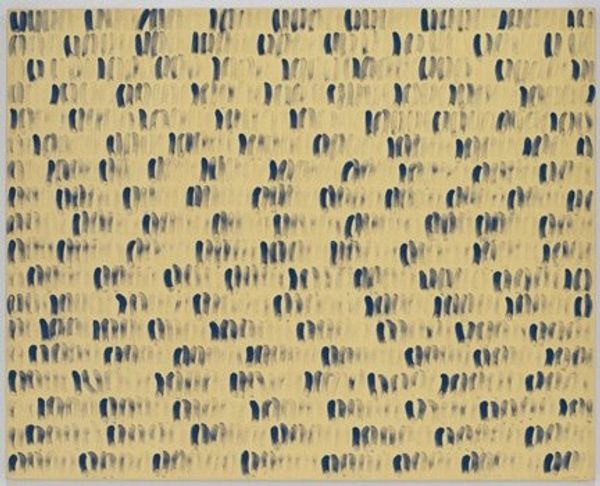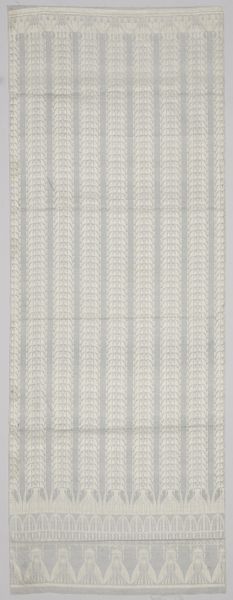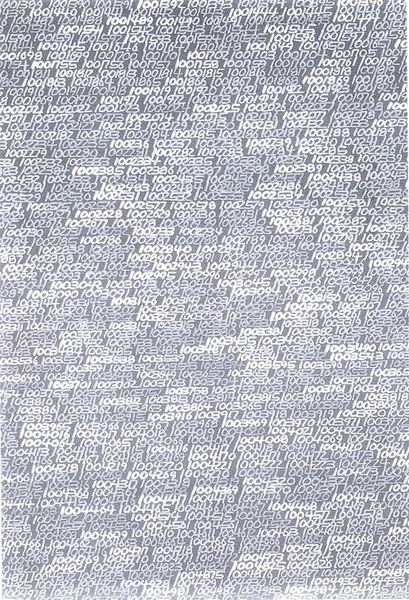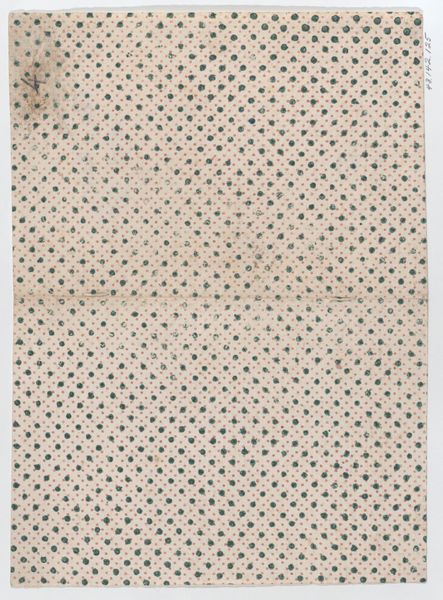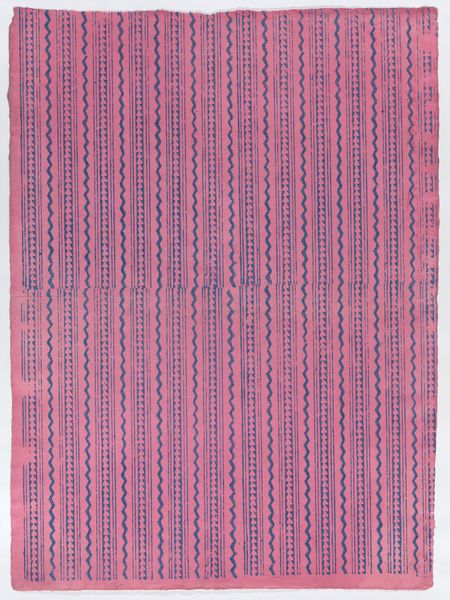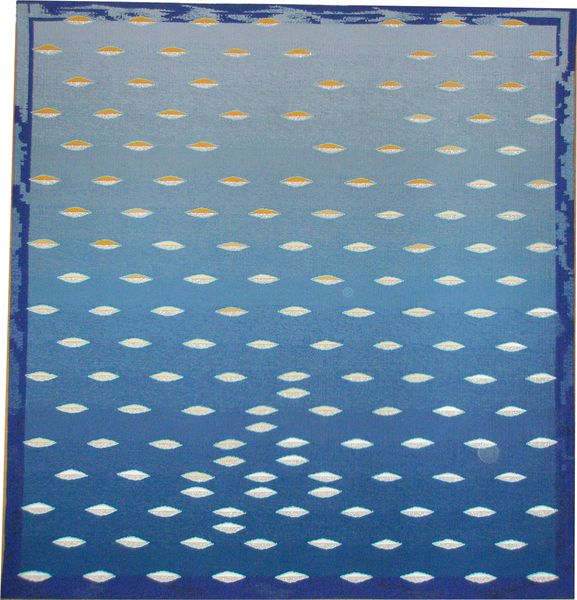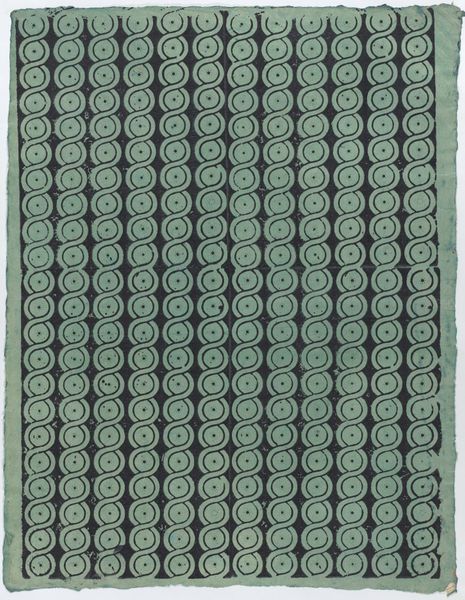
#
pattern design
#
repetitive shape and pattern
#
geometric
#
repetition of pattern
#
vertical pattern
#
abstraction
#
line
#
pattern repetition
#
textile design
#
imprinted textile
#
layered pattern
#
combined pattern
#
pattern work
Copyright: Lee Ufan,Fair Use
Curator: Here we have Lee Ufan's "From Point," created in 1976. What do you make of it? Editor: Well, immediately I'm struck by a feeling of disciplined meditation, you know? The repetitive nature of those indigo squares, marching across this textile ground, like watching rain on a window, soothing and kind of hypnotizing. Curator: Precisely. Ufan, key in the *Mono-ha* movement, focuses on materials "as they are," engaging the viewer with simple gestures. He repeats this square, allowing a conversation between the marked and unmarked space. How do you read his use of materials? Editor: It's like he's gently coercing a new voice from an ordinary surface, that simple textile becomes a meditative scroll, each mark a tiny echo of some much bigger creative intention. This feels post-impressionistic and pattern-based. I'm drawn to the texture of the material, those minute shifts giving warmth. Do you read that same intention, of letting the materiality speak? Curator: Absolutely. He doesn’t aim to transform or hide the innate qualities. The slight irregularities of each point suggest an almost human touch, something very intuitive even. Editor: I’m fascinated by how those almost primitive digital forms dance, that is a complex layered pattern that draws me in. He balances that tension so carefully, between rigorous geometric and a playful, textural quality that you can sink into. Curator: He seeks a way of making art that is about openness. The marks are separated from the background material to allow us a relational space, a space to breathe with it. It's interesting how the repetitive shape and pattern makes the art be like a textile design too. Editor: You've made me think, there's this strange serenity that lingers after looking. It's like a silent challenge—could simplicity become its own statement. A visual haiku of the dot, that creates the idea of imprinted textile through its unique use.
Comments
No comments
Be the first to comment and join the conversation on the ultimate creative platform.

